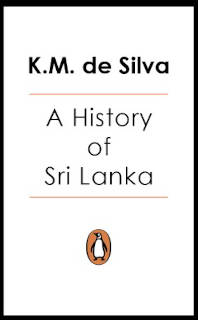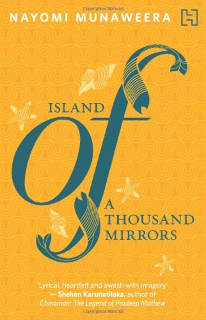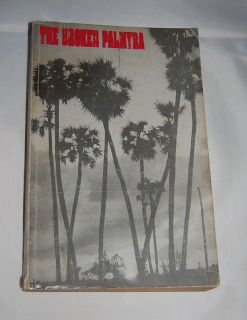[From Unsplash]
Sri Lanka is facing one of its worst economic crises. The country fell into default for the first time in its history. It is facing shortages of even essential items—food, fuel and medicines. The public anger has erupted into protests across the island nation. By many accounts, this crisis was caused by the events of the last few years. The government introduced tax cuts, which reduced its revenues. It was splurging on ambitious infrastructure projects. And then the pandemic hit, taking away some key sources of income. At the height of the pandemic, the government forced its farmers to shift to organic, creating an agricultural crisis. It all boiled over to reach where it’s now.
But, the seeds of a crisis this harsh were planted even earlier: The popularity of Rajapaksas among the majority of the country, for their role in ending the civil war, the Easter Sunday attacks which brought them back to power, the competition between China and India to gain influence—and above all the mood in the country following the end of the civil war in 2009.
When I was growing up in Tamil Nadu in the 80s and 90s, I could hear the echoes of the civil war all around—not just in the newspaper and in the heated debates on the topic, but also in the normal, boring daily life. I knew a couple of families who had taken refuge in Coimbatore. I knew more than a few people who were sympathetic to the cause of the LTTE. The Tamil Tiger calendars on the walls of their houses would sway in the wind, even as they discussed local problems. In 91, it was not merely an echo, we all could hear the very source of the deadly sound when LTTE assassinated Rajiv Gandhi in Tamil Nadu.
The Sri Lankan civil war lasted for about 25 years—from 1983 to 2009. But, the seeds of the civil war were planted much earlier—in the policies Sri Lanka introduced in the 50s and 60s that favoured the Sinhalese at the cost of the Tamils. But there were nuances that I missed in the Sinhalese-Tamil conflict, as I discovered while I was reporting on a story on Tamilnad Mercantile Bank for Forbes India in 2008-09. I was talking to a group of TMB shareholders in Chennai—all of them belonged to the Nadar community—when the conversation turned to Sri Lanka. They spoke approvingly of the government’s hard stance against LTTE at that time. It was clear where their sympathies lay. One of them explained that when their community members went to Sri Lanka and tried to earn a living setting up grocery stores they were threatened by Sri Lankan Tamils, and it was the government that gave them safe passage back to India. The issues remain a hot button topic. There are heated debates in Tamil Nadu around the release of Perarivalan, who spent 30 years in prison for his role in the assassination of Rajiv Gandhi.
The issues are clearly complex. So, here are a few books—a mix of fiction and non fiction and two films—one, a documentary and another a feature film. Some of them come with solid recommendations and will help lift the curtain on Sri Lanka—and in these polarised times, offer some important lessons for everyone.
1. A History of Sri Lanka, by K M de Silva

This book is a standard introduction to the history of Sri Lanka from the prehistoric era to the present times. It’s written in an academic style, but don’t let that discourage you because it gives a panoramic view which should be useful even if you are going for a holiday there.
2. When Memory Dies by A. Sivanandan

Capturing change through multiple generations of a family is a powerful technique used by novelists. Tiger Claw Tree by Pa Krishnan is a good (sadly underappreciated) example from India. When Memory Dies is the Sri Lankan equivalent—but far more tragic. It tells the story of three generations covering colonial times through to the civil war.
3. Island Of A Thousand Mirrors by Nayomi Munaweera

More relatable than When Memory Dies, it tells the story of the island through two young women, Yashodhara and Saraswathi. The debut novel won the Commonwealth Book Prize for Asia in 2013.
4. The Broken Palmyra by Rajan Hoole, Daya Somasundaram & K. Sritharan and Rajani Thiranagama

Samuel Pepys, who writes A Letter from London for Founding Fuel, says, “I cried after reading The Broken Palmyra. It's that powerful. It was written by four academics from Jaffna who initially adopted a neutral and learning mindset about the conflict and then slowly, shaped by their experiences, ended up calling out the brutality of both sides. How authentic the book must have been given that the LTTE killed one of its authors, Rajini Thiranagama, for writing it.”
“The Arrogance of Power [out of print] by Rajan Hoole, a co-author of The Broken Palmyrah, is considered one of the most authentic accounts of the human rights abuses in Sri Lanka.
“The beauty of the books is that they were written bang in the middle of conflict, by people with skin in the game (literally).”
5. Sri Lanka: Finding Father Francis
This documentary from 2019 highlights one of the tragic consequences of the civil war. Thousands of people simply went missing. The documentary is less than 30 minutes, and tells their story through Father Francis. “On the final day of the conflict, a Catholic Tamil priest led and negotiated the surrender of at least 360 people, including Tamil Tigers and children as young as two. All of them boarded military buses—never to be seen again.”
Watch the documentary on YouTube: https://www.youtube.com/watch?v=HUx53mdlB3E
6. Kannathil Muthamittal
Mani Ratnam’s Kannathil Muthamittal is a heartwarming story about a little girl who is told by her parents on her ninth birthday that she was adopted and then resolves to see her biological mother. Her biological mother however is a LTTE fighter, which takes what’s essentially a family story into the realm of politics. A television channel interviewed Sri Lankan Tamil refugees after the film was released—and their reactions drove home the point that there is in fact no line between the two. Here’s the last scene of the movie. It’s in Tamil, but language must be no barrier to feel the emotions.
Watch the full movie on Netflix: https://www.netflix.com/title/70053874


